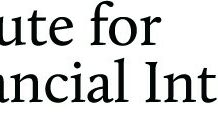FORT LAUDERDALE, Fla., Jan. 28, 2022 /PRNewswire-HISPANIC PR WIRE/ — A joint survey conducted by Debt.com and the Florida Atlantic University Business and Economics Polling Initiative (FAU BEPI) shows the oldest and youngest respondents had to drain their savings account due to the pandemic. Gen Z (ages 18-24) did that the most, at 72%, followed by the Silent Generation (75 years old and up) at 61%.

The three generations in between fared better at maintaining their savings during the pandemic, but the statistics are still concerning. Only half of Millennials (51%) tapped their savings, followed by Gen Xers at 45%. By and large, Baby Boomers managed to keep their savings intact, with only 29% of Boomers saying they took out savings.
“The pandemic’s economic shock – and its after-effects – is affecting the oldest and youngest adults in America the most,” says Debt.com Chairman Howard Dvorkin, CPA. “Younger Americans were already falling further behind financially and delaying life goals thanks to things like student loan debt. Now they are even further behind because of COVID. Not only do they have less savings, but large numbers also reported that they lost income and took on credit card debt because of the pandemic.”
Young Americans were also the most likely to stop paying their credit cards at some point during the pandemic. Over half of Gen Z survey respondents (57%) admitted that they couldn’t keep up with those bills. Compare that to just 17% of Baby Boomers and 21% of Gen Xers who said the same.
The survey also revealed that the Silent Generation may be silently slipping into credit card debt. One in three have more than $30,000 in credit card debt, and nearly 5% have more than $50,000. More than 4 in 10 carry credit card debt every month.
FAU BEPI director Monica Escaleras noted that differences arose not only by age, but also by location. “The younger generations and those in Northeast and West took on more credit card debt,” Escaleras says. “Individuals in the Northeast and West also reported a higher percentage of income loss due to COVID-19 compared to the South and Midwest.”
In fact, Midwesterners seemed to fare better than their regional counterparts on almost every count. They were less likely to experience income loss, less likely to take on credit card debt and stop making payments, and less likely to take money out of savings.
“Just as COVID-19 has spread unevenly across the country, the financial devastation is also uneven,” Dvorkin says. “Overall statistics about the price we’ve paid tell us something, but they don’t tell the full story.”
About: Debt.com is the consumer website where people can find help with credit card debt, student loan debt, tax debt, credit repair, bankruptcy, and more. Debt.com works with vetted and certified providers that give the best advice and solutions for consumers ‘when life happens.’
Methodology: Data was collected Oct. 1-20, 2021, from 1,022 Americans over the age of 18, using a mixed mode sample of online, cell phone and telephone participants. All respondents interviewed in this study were part of either a fully representative sample using mixed mode random stratified probabilistic sampling and a non-probability panel sample. The credibility interval for the sample is +/- 3.065% in 19 of 20 cases. Percentages are rounded up to the nearest whole number.
Logo – https://mma.prnewswire.com/media/1576979/logo_debt_com_full_color_final_Logo.jpg
SOURCE Debt.com







